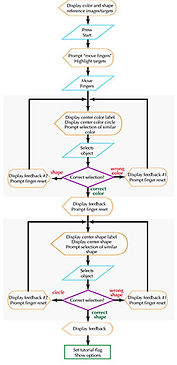Bob Hone
Designer/Grant Writer
Recent Projects
Factitious News Game
Can You Tell Real From Fake?
The Factitious news game challenges players to tell if online news articles are fake or real. We carefully selected and “tuned” the collection of surprisingly true real stories and deceptive fake stories to maximize player engagement. The game was played over 100K times in the first two days.
Teachers discovered the game in September 2017 and used it in their media literacy lessons. Since then, more than 840,000 games have been played by more a half million students around the U.S.


Original Game Level Selection Post-Reorg
We created six new game levels in October 2018 and added a way for teachers to send us comments. Teachers repeatedly requested game levels for their particular students (middle school, high school, and college).
Using the Factitious Game Platform, I designed and executed a major reorganization that sorted the articles by reading level and difficulty into three groups of game levels. The graph shows that before the reorg, teachers mostly assigned only the first level to their students. After the reorg, most teachers selected the game levels appropriate to their students.
Neuroscape Adaptive Tutorials
Helping Seniors Learn A Therapeutic Cognitive Game
The acclaimed Neuroscape lab at UCSF asked me to design several adaptive interactive tutorials to help seniors in assisted living centers learn how to play a clinically designed cognitive game, on their own, so they could improve their attention.
Working closely with the Neuroscape team, I devised flowcharts and example graphics that the team could approve before the developer started building the adaptive programs that responded to the players' actions.
After an initial negative evaluation with seniors before our project, the adaptive interactive tutorials got rave reviews in a new evaluation in December 2019.




Seeing the Good Side
Neurogame For Children With Severe Anxiety
I collaborated with Dr. Daniel Pine of the National Institute of Mental Health on a cognitive game to help children with severe anxiety correct their "bias towards threatening images," which often trigger their anxiety.
Working with my frequent collaborator, expert developer Chas Brown, we designed a hidden number puzzle game with a special feature. The hidden numbers would be placed away from angry faces in an illustrated classroom scene. The only way the children could find them was by looking away from the threatening faces.
To make sure the games were engaging–not too hard to be frustrating and not too easy to be boring–Chas and I also designed a "puzzle builder" tool that would let us easily adjust the visibility of each hidden number.
We tested the puzzles to find which numbers were too well hidden and those not hidden well enough and then adjusted the visibility to make sure all numbers presented an appropriate challenge.
The NIMH is currently conducting a thorough randomized controlled trial of the game to see if it helps reduce symptoms in children with severe anxiety.

